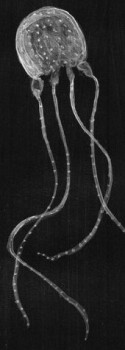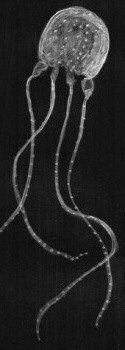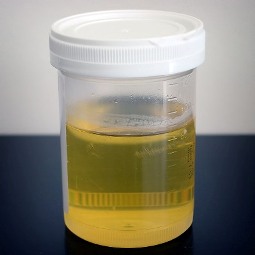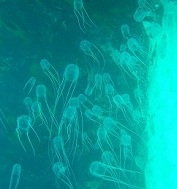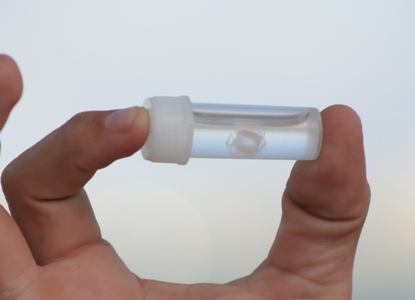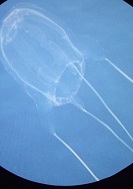Irukandji Syndrome
Irukandji Syndrome is something you NEVER want to experience. It is so incredibly painful that some people beg for death when in its demonic grasp. Although other box jellyfish can inflict similar symptoms that are labeled as Irukandji Syndrome, only C. barnesi can cause the true Irukandji Syndrome extremes.
The Name
The Irukandji Tribe, a group of aboriginal Australians, have always lived along the Northern coast, particularly around the Queensland area. For years, tribe members had been encountering C. barnesi and experiencing agonizing, and sometimes fatal, symptoms without knowing what was harming them (Nickson 2009). Because this mystery illness so often happened to the Irukandji tribe, it was named after them in 1952 (Fenner and Hadok 2002).
Wikimedia Commons: Steve Evans
Symptoms
ZAP! You feel a quick and small sting, you look around, see nothing, and the
pain doesn’t persist. Just ignore it; you probably imagined it, right? Wrong.
Probably one of the most dangerous aspects of C. barnesi is its
delayed venom release. You may not feel pain immediately, but you will begin to
have “severe systemic symptoms…some 30 minutes after” the sting
(Fenner and Hadok 2002).
Symptoms
include:
1. Severe low back pain
2. Excruciating muscle cramps in all four limbs, the
abdomen, and chest
3. Little to no control of extremities
4. Sweating
5. Anxiety
6. Restlessness
7. Nausea
8. Vomiting
9. Headache
10. Palpitations: irregular heart beat
11. Hypertension: high/raising blood pressure
12. Pulmonary oedema: fluid entering lungs
13. Toxic global heart dilatation: enlargement of heart
These symptoms are caused by two major events stimulated by the venom. Firstly, the venom “acts as a presynaptic neuronal sodium channel agonist” and the amount of noradrenalin (“adrenaline’s ‘cousin,’” often called “norepinephrine” in the U.S. (Jeremy 2008) released is greatly increased. (Fenner and Hadok 2002)
This video follows the stinging story of two divers that were routinely looking for C. barnesi around a swimming beach. They do this quite often and the odds just weren’t in their favor for this dive. This is a great look at the real symptoms of Irukandji syndrome.
http://www.youtube.com/watch?v=GK_Cl_54Qh8
Can We Stop This?
Wikimedia Commons: Sara Fleming
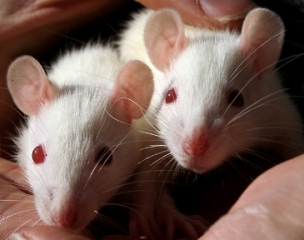 As
seen in the symptoms listed above, the heart can be greatly affected by
Irukandji Syndrome by palpitations, hypertension, and toxic global heart
dilatation. Kelly Wintera, Geoffrey Isbistera, Jennifer Schneiderb, Nicki
Konstantakopoulosa, Jamie Seymour, and Wayne Hodgsona developed an experiment in
order to view the effects of C. barnesi venom on the heart and published their
research paper in 2008. In order to obtain venom, they first collected Irukandji
jellyfishes, removed the tentacles, and then extracted and mixed the venom with
distilled water. Wintera, et. al, then inserted the venom in to laboratory rats
(which was approved by the Animal Ethics Committee of Monash University) and
observed the arterial pressure and plasma. It was noted that before the venom
exposure, adrenaline was not detectable in the plasma, but after the injection
the “adrenaline concentrations increased markedly.” The peak of adrenaline and
noradrenaline concentrations was three minutes after the venom injected.
Obviously, this time frame cannot be applied to humans due to difference of
heart and overall body size. When the drugs guanethidine and reserpine were
used, the negative response to the venom was greatly reduced. Guanethidine
blocks the release of noradrenaline and reserpine stops the transport of
noradrenaline. Using these results from 2008,
Wintera, et. al, say they are
working on anti-venom, but so far there has not been complete success. The
standard box-jellyfish anti-venom did not affect this type of cardiovascular
response, mostly because the anti-venom binds to some proteins, but not all of
them. It is not determined what all of the proteins in the venom are and which
ones are causing Irukandji syndrome.
As
seen in the symptoms listed above, the heart can be greatly affected by
Irukandji Syndrome by palpitations, hypertension, and toxic global heart
dilatation. Kelly Wintera, Geoffrey Isbistera, Jennifer Schneiderb, Nicki
Konstantakopoulosa, Jamie Seymour, and Wayne Hodgsona developed an experiment in
order to view the effects of C. barnesi venom on the heart and published their
research paper in 2008. In order to obtain venom, they first collected Irukandji
jellyfishes, removed the tentacles, and then extracted and mixed the venom with
distilled water. Wintera, et. al, then inserted the venom in to laboratory rats
(which was approved by the Animal Ethics Committee of Monash University) and
observed the arterial pressure and plasma. It was noted that before the venom
exposure, adrenaline was not detectable in the plasma, but after the injection
the “adrenaline concentrations increased markedly.” The peak of adrenaline and
noradrenaline concentrations was three minutes after the venom injected.
Obviously, this time frame cannot be applied to humans due to difference of
heart and overall body size. When the drugs guanethidine and reserpine were
used, the negative response to the venom was greatly reduced. Guanethidine
blocks the release of noradrenaline and reserpine stops the transport of
noradrenaline. Using these results from 2008,
Wintera, et. al, say they are
working on anti-venom, but so far there has not been complete success. The
standard box-jellyfish anti-venom did not affect this type of cardiovascular
response, mostly because the anti-venom binds to some proteins, but not all of
them. It is not determined what all of the proteins in the venom are and which
ones are causing Irukandji syndrome.
Wikimedia commons: Ewkaa
Although there is no anti-venom yet, the search continues and there are a few steps that can possibly help with the extreme pain. It is recommended, for all jellyfish stings, that vinegar is immediately poured upon the sting area. The vinegar, for unknown reasons, is able to disable any unfired cnidocytes on the skin, thus reducing the chance of even more venom being injected into the body (Fenner and Hadok 2002). Once stung and in a hospital, the medical staff can administer morphine, but this may only help with a fraction of the pain or not at all.
Also, there is a myth that urinating on the sting area can help. This is not true. Do not urinate on the sting area. It will not aid in slowing or reducing any pain or release in venom. It will only make you smell bad.
Wikimedia Commons: turbotorque
Next Stop: References
UW-L
Last Updated: April 26, 2013
